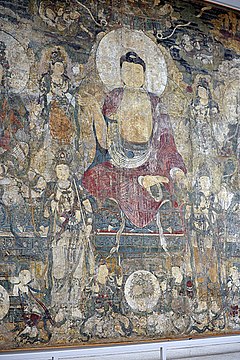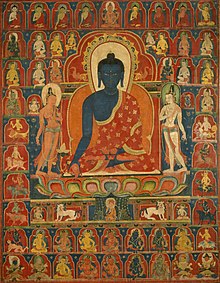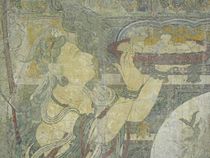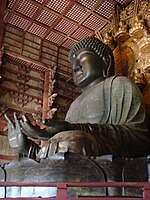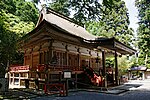Bhaisajyaguru
| |||||||||||||||||||||||||||||||||||||||||
Read other articles:

ГородищеНемировское городище Валы Немировского городища 48°56′54″ с. ш. 28°53′27″ в. д.HGЯO Страна Украина Область Винницкая Дата основания середина VIII в. до н. э. Статус Археологический памятник Памятник культурного наследия Украины национального значения. О�…

本條目存在以下問題,請協助改善本條目或在討論頁針對議題發表看法。 此條目需要編修,以確保文法、用詞、语气、格式、標點等使用恰当。 (2015年7月23日)請按照校對指引,幫助编辑這個條目。(幫助、討論) 此條目內容疑欠准确,有待查證。 (2015年7月23日)請在讨论页討論問題所在及加以改善,若此條目仍有爭議及准确度欠佳,會被提出存廢討論。 此條目之中立性有争议…

此條目可参照英語維基百科相應條目来扩充。 (2021年5月6日)若您熟悉来源语言和主题,请协助参考外语维基百科扩充条目。请勿直接提交机械翻译,也不要翻译不可靠、低品质内容。依版权协议,译文需在编辑摘要注明来源,或于讨论页顶部标记{{Translated page}}标签。 约翰斯顿环礁Kalama Atoll 美國本土外小島嶼 Johnston Atoll 旗幟颂歌:《星條旗》The Star-Spangled Banner約翰斯頓環礁地�…

海尔·塞拉西一世埃塞俄比亚皇帝統治1930年11月2日-1974年9月12日(43年314天)加冕1930年11月2日前任佐迪图繼任阿姆哈·塞拉西一世(流亡)埃塞俄比亞攝政王統治1916年9月27日-1930年11月2日(14年36天)出生(1892-07-23)1892年7月23日 埃塞俄比亚帝国哈勒爾州逝世1975年8月27日(1975歲—08—27)(83歲) 衣索比亞亚的斯亚贝巴安葬2000年11月5日圣三一大教堂配偶梅南·阿斯福(1889年-1962年�…

Questa voce o sezione sull'argomento Calabria è priva o carente di note e riferimenti bibliografici puntuali. Sebbene vi siano una bibliografia e/o dei collegamenti esterni, manca la contestualizzazione delle fonti con note a piè di pagina o altri riferimenti precisi che indichino puntualmente la provenienza delle informazioni. Puoi migliorare questa voce citando le fonti più precisamente. Segui i suggerimenti del progetto di riferimento. Questa voce sull'argomento centri abitati de…
2020年夏季奥林匹克运动会波兰代表團波兰国旗IOC編碼POLNOC波蘭奧林匹克委員會網站olimpijski.pl(英文)(波兰文)2020年夏季奥林匹克运动会(東京)2021年7月23日至8月8日(受2019冠状病毒病疫情影响推迟,但仍保留原定名称)運動員206參賽項目24个大项旗手开幕式:帕维尔·科热尼奥夫斯基(游泳)和马娅·沃什乔夫斯卡(自行车)[1]闭幕式:卡罗利娜·纳亚(皮划艇)[2…

Robur-le-Conquérant Frontispice du roman. Auteur Jules Verne Pays France Genre Roman d'anticipation Éditeur Pierre-Jules Hetzel Date de parution 1886 Illustrateur Léon Benett Nombre de pages 318 Chronologie Série Voyages extraordinaires Frritt-Flacc Nord contre Sud modifier Robur-le-Conquérant est un roman d'anticipation de Jules Verne, paru en 1886. Historique Le roman paraît d'abord en feuilleton dans le Journal des débats politiques et littéraires, du 29 juin au 18 août 1886[1]…

Order of flowering plants Caryophyllales Dianthus caryophyllus Scientific classification Kingdom: Plantae Clade: Tracheophytes Clade: Angiosperms Clade: Eudicots Clade: Superasterids Order: CaryophyllalesJuss. ex Bercht. & J.Presl[1] Suborders Caryophyllineae Polygonineae Portulacineae Synonyms Centrospermae Caryophyllales (/ˌkæri.oʊfɪˈleɪliːz/ KARR-ee-oh-fih-LAY-leez)[2] is a diverse and heterogeneous order of flowering plants that includes the cacti, carnations, amar…

American businessman M. C. D. BordenBornMatthew Chaloner Durfee Borden(1842-07-18)July 18, 1842Fall River, MassachusettsDiedMay 27, 1912(1912-05-27) (aged 69)Oceanic, New JerseyAlma materYale UniversityOccupationIndustrialistKnown forAmerican Printing CompanySpouseHarriett M. DurfeeChildren7ParentRichard Borden (father)Signature Overview of American Printing Company, Fall River, Massachusetts Matthew Chaloner Durfee Borden (July 18, 1842 – May 27, 1912) was an American textile l…

Komuni Kudus di jendela kaca di St. Matthew's German Evangelical Lutheran Church, Charleston, South Carolina Bagian dari seri tentangGereja LutheranMawar Luther Concordia Pengakuan Iman Rasuli Pengakuan Iman Nicea Pengakuan Iman Atanasius Pengakuan Iman Augsburg Apologia Pengakuan Iman Augsburg Katekismus Besar Katekismus Kecil Pokok-Pokok Iman Schmalkalden Risalah Tentang Kewenangan dan Keutamaan Paus Rumusan Concordia Teologi Teologi Martin Luther Pembenaran Hukum dan Injil Sola gratia Sola sc…

List of largest countries redirects here. For largest countries by population, see List of countries and dependencies by population. Dymaxion map of the world with the 30 largest countries and territories by area This is a list of the world's countries and their dependencies by land, water, and total area, ranked by total area. The entries in this list include, but are not limited to, those in the ISO 3166-1 standard, which includes sovereign states and dependent territories. All 193 member stat…

Mosaik AleksanderSenimantidak diketahuiTahunk. 100 SMTipeMosaikUkuran272 cm × 513 cm (8 ft 11 in × 16 ft 9 in)LokasiMuseum Arkeologi Nasional, Napoli Mosaik Aleksander, yang berasal dari sekitar tahun 100 SM, adalah sebuah mosaik lantai Romawi yang berasal dari Casa del Fauno di Pompeii, yang diduga merupakan sebuah imitasi dari lukisan karya Apelles.[1] Karya tersebut menampilkan pertempuran antara pasukan Aleksander Agung dan D…
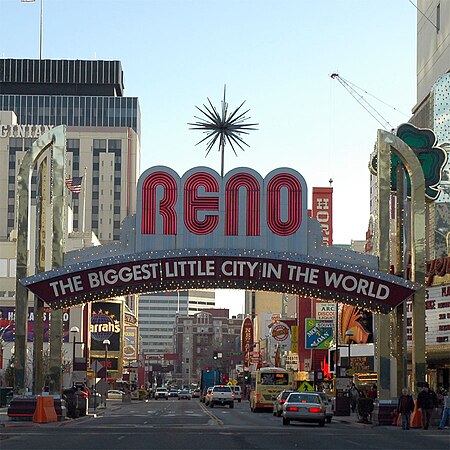
Reno, Nevada proudly displays its nickname as The Biggest Little City in the World on a large sign above a downtown street. This partial list of city nicknames in the United States compiles the aliases, sobriquets and slogans that cities are known by (or have been known by historically), officially and unofficially, to municipal governments, local people, outsiders or their tourism boards or chambers of commerce. City nicknames can help establish a civic identity, help outsiders recognize a comm…

State park in New York, United States Jones Beach State ParkAerial view of Jones Beach Island and Jones Beach State Park in July 2012TypeState parkLocation1 Ocean Parkway Wantagh, New York, U.S.[1]Coordinates40°35′45″N 73°30′55″W / 40.59583°N 73.51528°W / 40.59583; -73.51528Area2,413 acres (9.77 km2)[2]CreatedAugust 4, 1929 (1929-08-04)[3]Operated byNew York State Office of Parks, Recreation and Historic Preserv…

الدوري الألماني لكرة القدم تفاصيل الموسم 1966–1967 النسخة 4 البلد ألمانيا التاريخ بداية:20 أغسطس 1966 نهاية:3 يونيو 1967 المنظم الاتحاد الألماني لكرة القدم البطل آينتراخت فرانكفورت مباريات ملعوبة 306 عدد المشاركين 18 أهداف مسجلة 895 الحضور الجماهيري 7511500 …
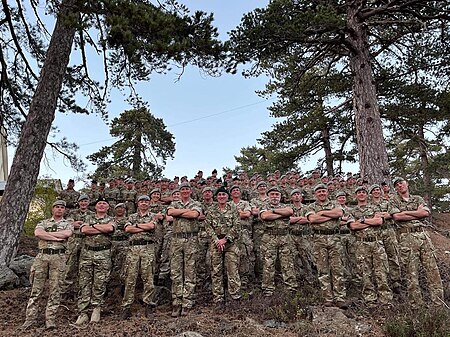
The Scottish and North Irish YeomanryCap badge and TRF of the regimentActive31 October 2014 – presentCountry United KingdomBranch British ArmyTypeLight cavalryYeomanryRoleClose-quarters combatCold-weather warfareDesert warfareForward observerManeuver warfarePatrollingRaidingReconnaissanceScreeningUrban warfareSizeRegimentPart of19th BrigadeRegimental HeadquartersRedford Barracks, EdinburghMotto(s)Per Vigilans (Ever Vigilant)ColorsDeep Brunswick Green with St Andrew's Blue over a…

This article has multiple issues. Please help improve it or discuss these issues on the talk page. (Learn how and when to remove these template messages) The topic of this article may not meet Wikipedia's general notability guideline. Please help to demonstrate the notability of the topic by citing reliable secondary sources that are independent of the topic and provide significant coverage of it beyond a mere trivial mention. If notability cannot be shown, the article is likely to be merged, re…

Breathalyzer Breathalyzer atau breathalyser (sebuah lakuran dari kata breath (napas) dan analyzer/analyser (penganalisis)) adalah sebuah alat untuk memperkirakan kadar alkohol dalam darah, atau untuk mendeteksi virus atau penyakit atau perbedaan jenis dagung dari sampel napas. Nama tersebut adalah markah dagang tergenerikisasi dari nama merek Breathalyzer yang dikembangkan oleh penemu Robert Frank Borkenstein pada 1950an.[1][2] Referensi ^ Kesalahan pengutipan: Tag <ref> ti…
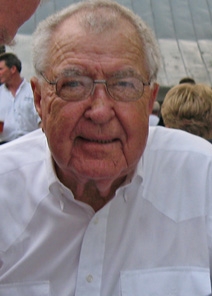
Carroll ShelbyShelby di 2007LahirCarroll Hall Shelby11 Januari 1923Leesburg, Texas, Amerika SerikatMeninggal10 Mei 2012(2012-05-10) (umur 89)Dallas, Texas, Amerika SerikatKarier Kejuaraan Dunia Formula SatuKebangsaanAmerika SerikatTahun aktif1958–1959TimAston Martin, non-works MaseratiJumlah lomba8Juara Dunia0Menang0Podium0Total poin0Posisi pole0Lap tercepat0Lomba pertama1958 French Grand PrixLomba terakhir1959 Italian Grand PrixCatatan lomba Le Mans 24 JamTahun1958–1959TimDavid Brown R…

Ralph TammNazionalità Stati Uniti Football americano RuoloGuardia CarrieraGiovanili West Chester University Squadre di club 1990 - 1991 Cleveland Browns1991 Cincinnati Bengals1991 Washington Redskins1992 - 1994 San Francisco 49ers1995 - 1996 Denver Broncos1997 - 1999 Kansas City Chiefs Statistiche aggiornate al 19/01/2013 Modifica dati su Wikidata · Manuale Ralph Earl Tamm (Filadelfia, 11 marzo 1966) è un ex giocatore di football americano statunite…
